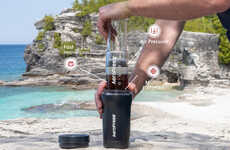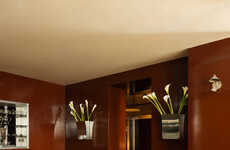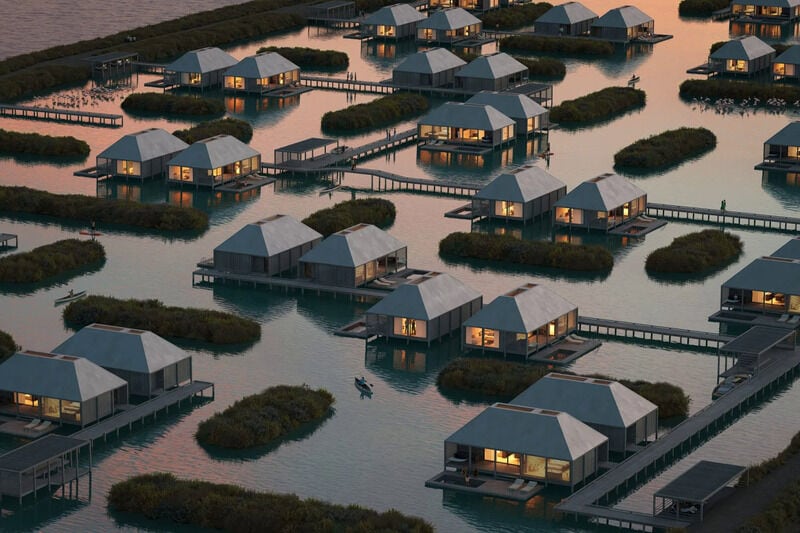
MAST Introduces Plans to Build a Hotel on Stilts in Portugal
Amy Duong — June 8, 2024 — Art & Design
Danish maritime architecture firm MAST introduces a look at its plans to build a hotel that is based on a series of houses sitting on stilts. It will be in a lagoon in Portugal which was once used for salt production along the Sado Estuary by Setúbal.
Marshall Blecher, the architect and co-founder of MAST explains the location, stating "The landscape is extremely unique and naturally beautiful. We saw an opportunity to create a new typology of accommodation for the area without significantly impacting the site."
The area has overgrown salina and this will be converted into a sustainable tourist stop that is inspired by the traditional fisherman hut and jetties that the south of Portugal is recognized for. The construction process is expected to start imminently with the first homes prepared to open by late 2025.
Image Credit: MAST
Marshall Blecher, the architect and co-founder of MAST explains the location, stating "The landscape is extremely unique and naturally beautiful. We saw an opportunity to create a new typology of accommodation for the area without significantly impacting the site."
The area has overgrown salina and this will be converted into a sustainable tourist stop that is inspired by the traditional fisherman hut and jetties that the south of Portugal is recognized for. The construction process is expected to start imminently with the first homes prepared to open by late 2025.
Image Credit: MAST
Trend Themes
1. Sustainable Tourism - Transforming overgrown salina areas into eco-friendly tourist attractions showcases an innovative approach to sustainable development in sensitive natural regions.
2. Maritime-inspired Architecture - Drawing inspiration from traditional fisherman huts and jetties, this project integrates cultural heritage into modern architectural design, enhancing local authenticity.
3. Stilt-house Hotels - Elevated construction on stilts offers a unique lodging experience that minimizes environmental disruption and optimizes scenic, aquatic landscapes.
Industry Implications
1. Hospitality - Building stilt-house hotels in lagoons represents a novel direction for eco-luxury accommodation, marrying sustainability with high-end tourism.
2. Architecture - Maritime architecture firms innovating with stilt-based designs highlight the potential for adaptive, water-friendly construction techniques.
3. Ecotourism - Integrating eco-tourism with local traditions and minimal landscape impact invites a new wave of conscientious travelers seeking sustainability.
6.3
Score
Popularity
Activity
Freshness























